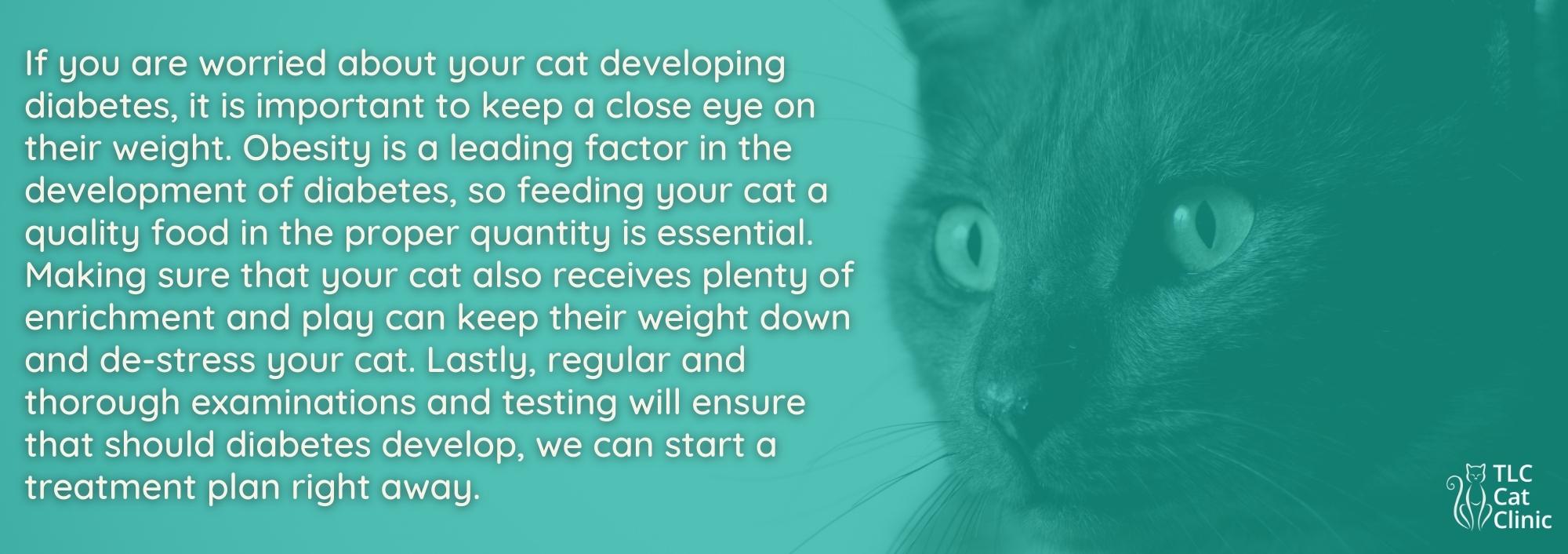|
Did you know that cats can suffer from diabetes, just like humans, and that cases of diabetes in cats are on the rise?  So, what exactly is diabetes? Diabetes is a condition where glucose, also known as blood sugar, cannot be regulated properly or effectively utilized by the cells of the body. It all starts in the pancreas, a small organ located near the stomach that is responsible for the production of the hormone insulin. Insulin’s job to carry glucose into the body’s cells where it can be converted into energy. Without sufficient levels of insulin, glucose doesn't reach the cells like it should, leading to an excessive buildup of glucose in the bloodstream. Think of insulin like a gatekeeper between the bloodstream and the inside of the cells of the body. It opens the portals in cells to allow glucose to pass. When your cat is not producing insulin or isn’t using it properly, their body begins to break down protein and fat which results in rapid weight loss, despite a ravenous appetite. Unintentional weight loss is often the most common symptom, though diabetes can also manifest in a myriad of other symptoms. Some of which include:
Untreated diabetes can lead to a variety of debilitating, expensive, and potentially fatal conditions. If your cat is showing symptoms of diabetes, make an appointment to see a veterinarian as soon as possible. Though there is no cure for this condition, the sooner your cat can begin treatment, the better the prognosis and the more manageable the condition typically is. If we suspect your pet is suffering from diabetes, an official diagnosis can be made using a combination of blood and urine tests. Once diagnosed, feline patients are treated similarly to older adults who develop Type 2 Diabetes that require twice daily insulin injections. Dietary changes and scheduled feeding times can also help to prevent unwanted spikes in blood sugar throughout the day. We can help you find a food that is properly balanced with the right combination of protein, carbohydrates, and fiber to best suit the needs of a diabetic cat. To help keep track of how well a patient is managed, we teach many clients how to perform blood sugar testing at home and request you keep an accurate journal of their appetite and bathroom habits. While a diabetes diagnosis may sound scary, rest assured that we are here to help you every step of the way. Most diabetic cats can go on to live normal, playful, happy lives with a little extra assistance from the TLC Cat Clinic team. Our goal is to work with you to help you provide a comprehensive treatment plan that will leave you confident and feeling in charge of your cat’s health! Comments are closed.
|
Categories
All
Archives
November 2022
|
|
Plymouth Sun Sailor 2019 and 2020
Readers' Choice Best Veterinary Clinic |
Clinic Hours
Monday - 9:00 am - 6:00 pm Tuesday - 9:00 am - 6:00 pm Wednesday - 9:00 am - 6:00 pm Thursday - 9:00 am - 6:00 pm Friday - 9:00 am - 6:00 pm |
|
Site powered by Weebly. Managed by IDEXX Laboratories


 RSS Feed
RSS Feed



